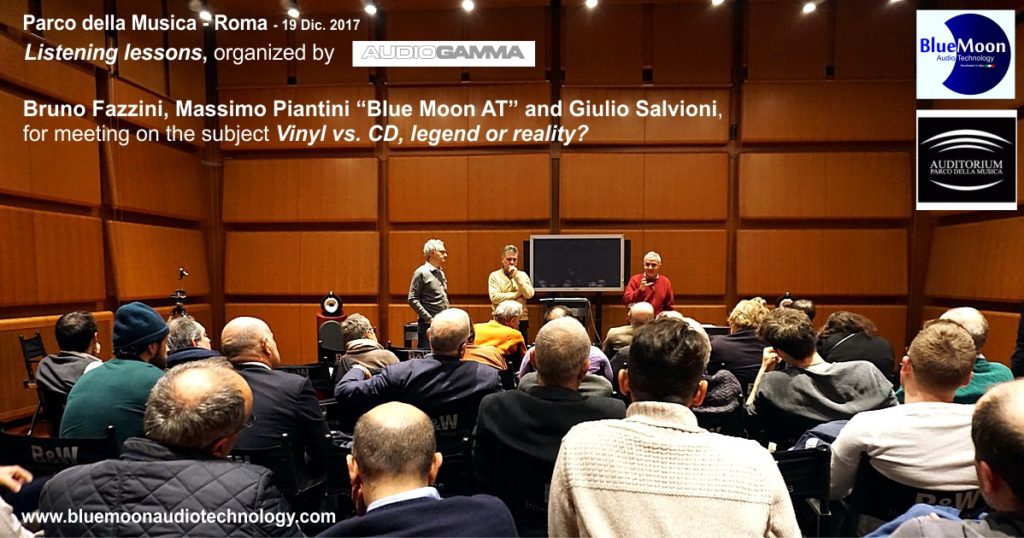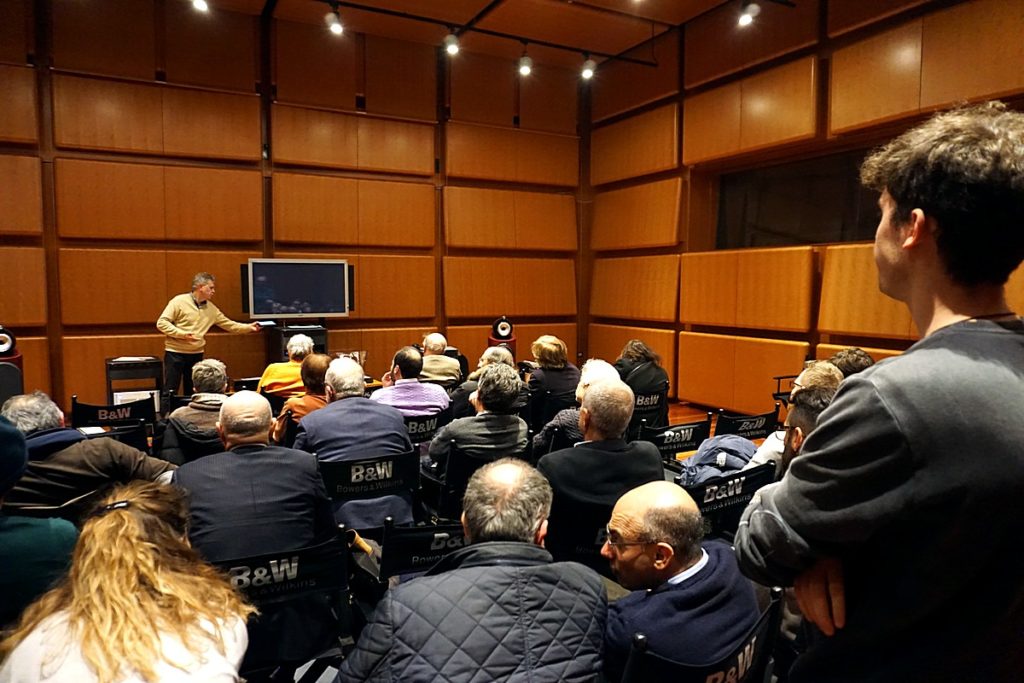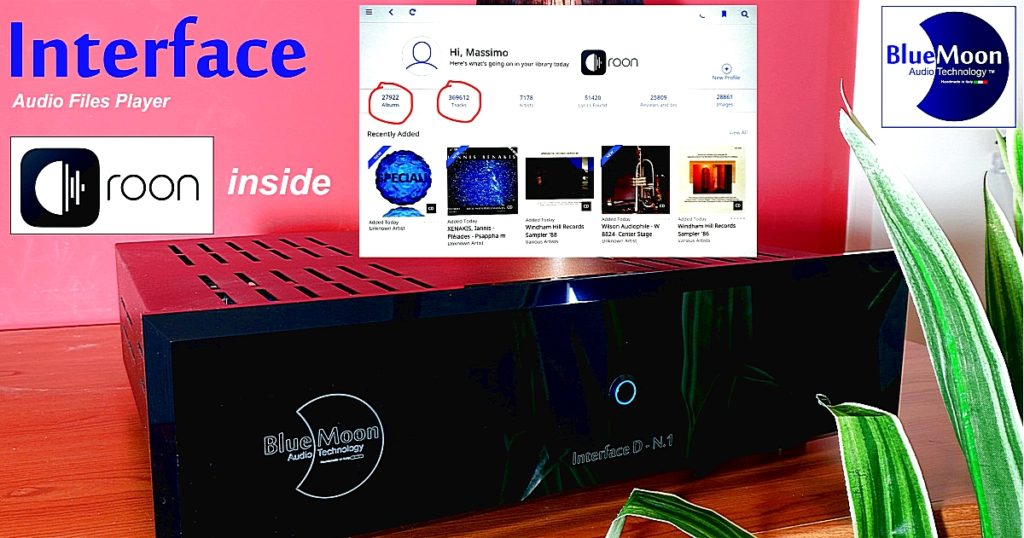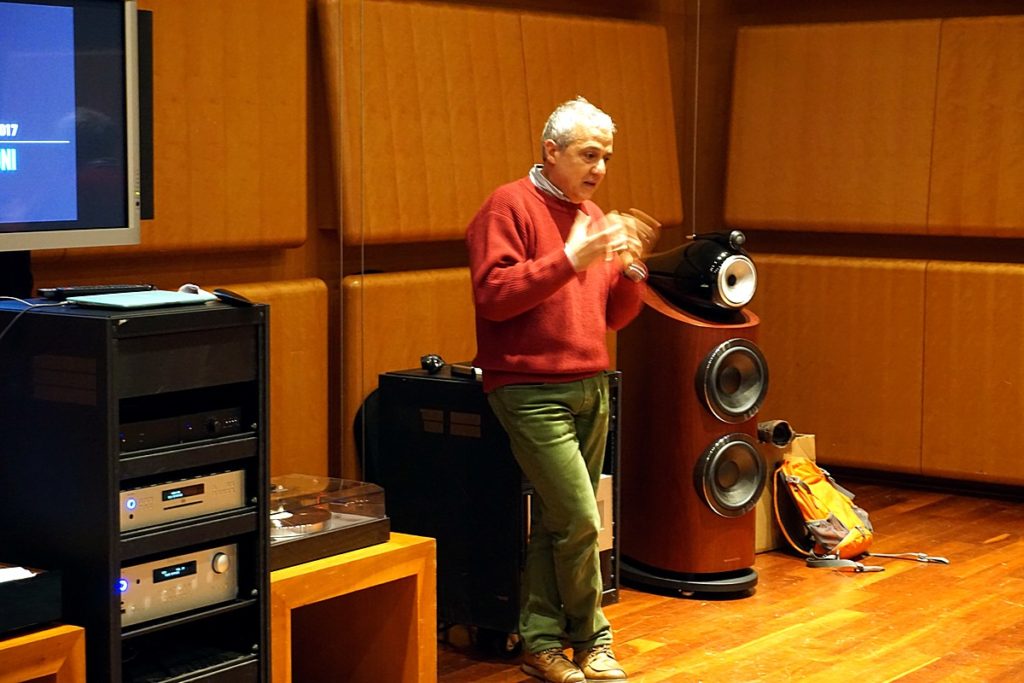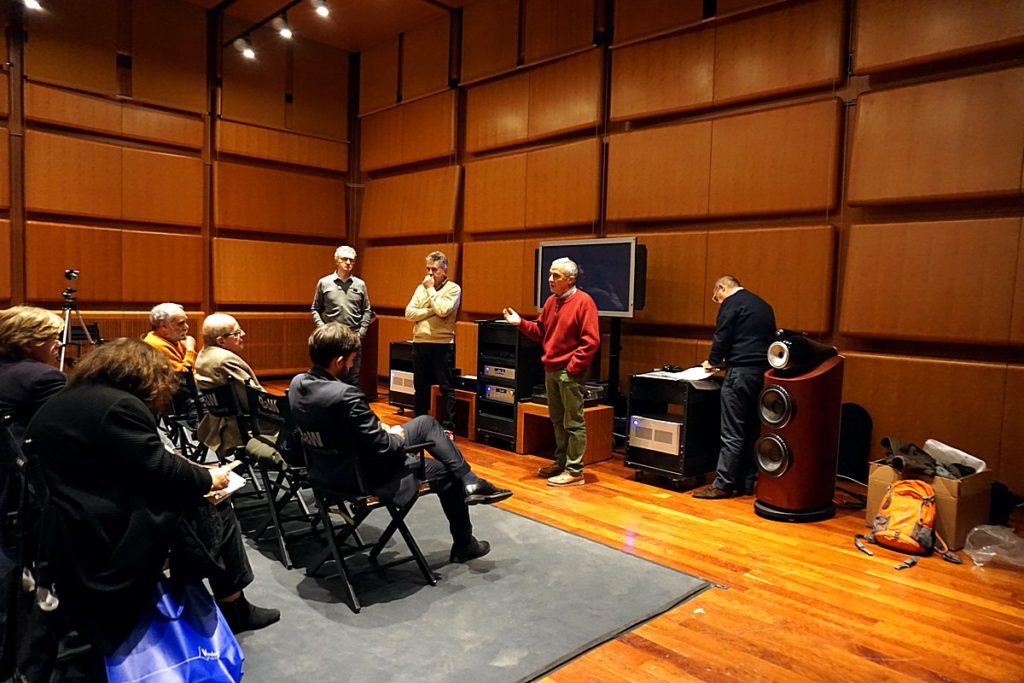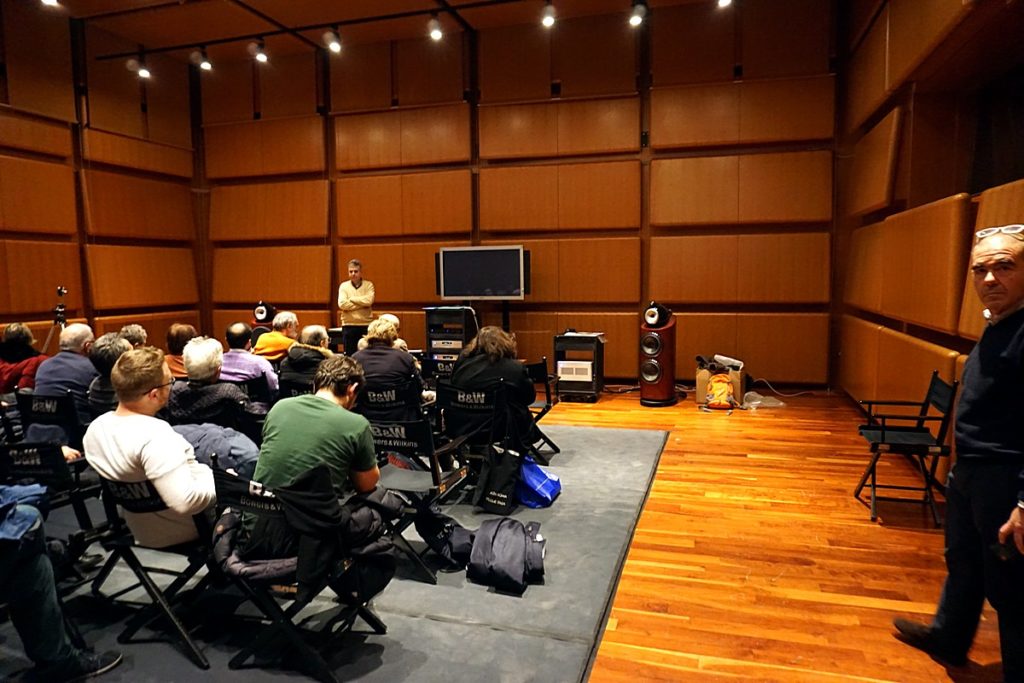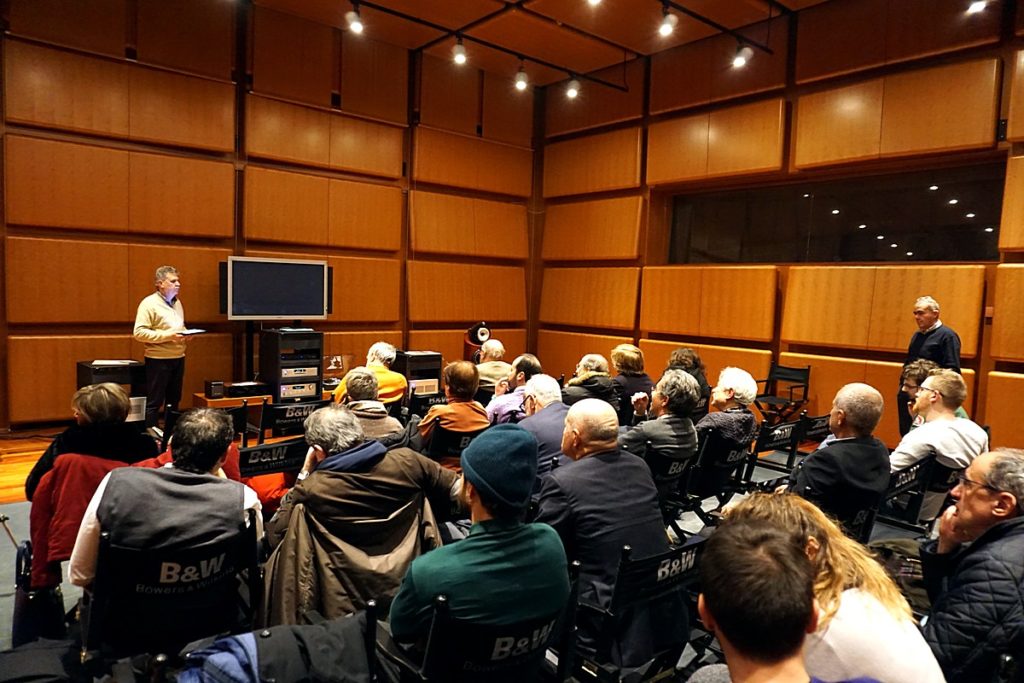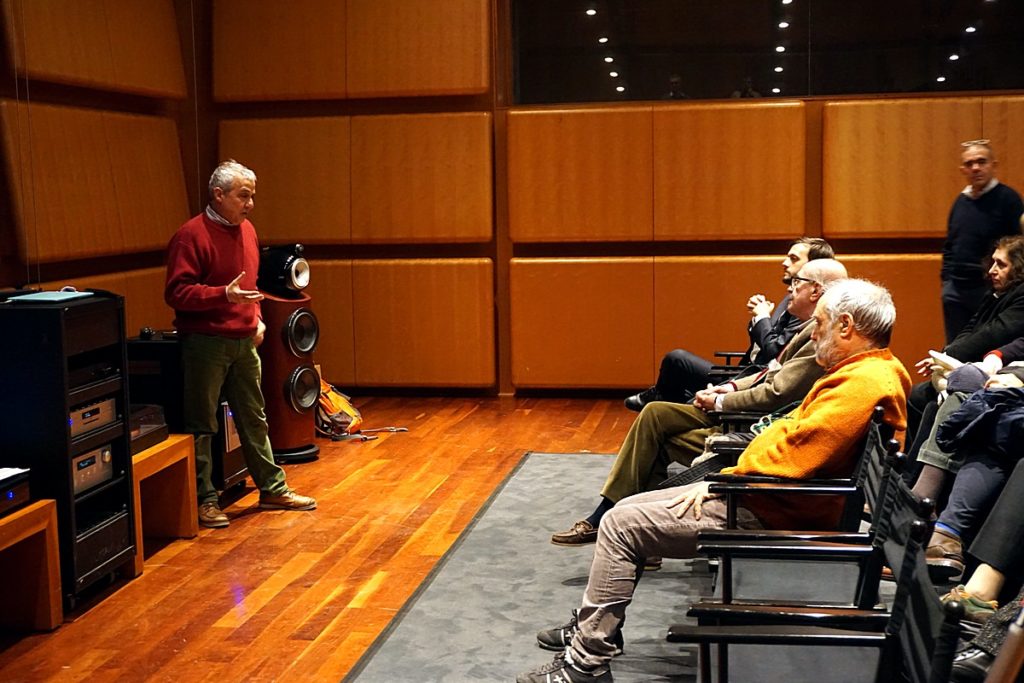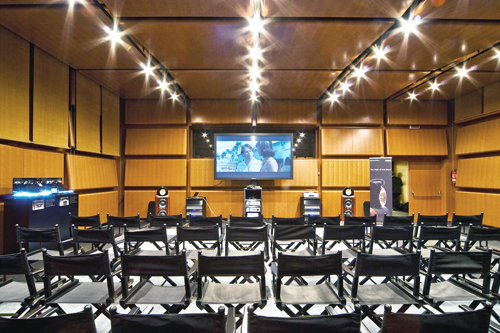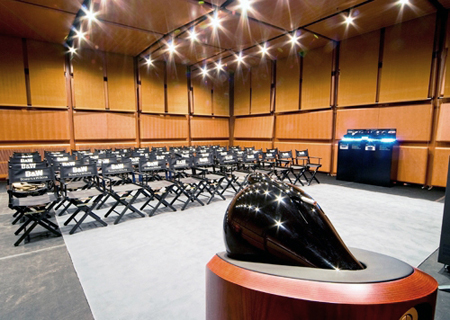Listening Lessons – Parco della Musica – Roma
(room 3 ore 21.00 – 19 Dic. 2017)
The summary of the meeting and the video content
The video
Introduced by Bruno Fazzini.
We report our experience, seen through the eyes of those who produce music in various formats.
We’ll talk about LPs, CDs and Audio Files and start by showing the molds we use to produce our LP. 2 matrices for side A and side B.
Interface D N.1 of our Blue Moon AT will play the Audio Files
Massimo Piantini explains how the LPs, CDs and Audio Files are produced
LP was born in 1948 to store the sound taken by the microphones of that era. It is a mechanical storage because at that time, there were no electronic objects, within everyone’s reach.
The problem of making music is where to keep the acquired sound, so that it can be used by the general public.
In the eighties technology was ready to store sound on a smaller, more user-friendly CD support.
At that time the HD had maximum capacity of 30 / 40Mbit, while an audio data stream of about 1 hour, it was 650Mbit. The technicians then invented the CD to contain all this data.
From the left: Bruno Fazzini – Massimo Piantini – Giulio Salvioni – Giancarlo Valletta
LP
The first step to do LP is to go into the cutting room, with the finished audio file and transmit it to the Neumann lathe to cut the “lacquer”, where the audio signal is engraved.
First, the technician applies a low-pass filter around the 9KHz frequency to prevent the stylus from jumping for a too small groove. The effectiveness of the filter occurs by having the lacquer read to the cartridge on the lathe-mounted arm. When the head does not jump from the groove, the highest incision frequency is identified.
Second step, the frequency is chosen, from which the signal must become mono. This operation is necessary because, typically under 200Hz the two opposing phases of the two channers, would cause the groove to close again and then the cartridge would jump.
As you can see, LP has some physical limitations due to the nature of the reading mode itself. But in 1948, the year of birth, the LP was the most effective system for storing the audio signal.
CD
The signal coming from the microphones, is amplified by the pre-mic and the mixer, and at the output it is passed on the AD converter to be transformed into a digital signal. Today 99% or more of the recordings are performed for “HardDisk Recording”, that is in a totally digital way.
In addition, Giulio Salvioni intervenes.
Starting from the fact that almost all of today’s recordings are in digital, the assertion that LP (analog) sounds better, is pure rhetoric, because LP is also generated by a digital signal. Before the 1980s, when all the recording process was analog, it made sense to print on LP, but today that all the files are digital, re-transform them into analog to put them on the LP, it loses its meaning.
Resumes the explanation Massimo Piantini
The production of the CD is easier because the Glass Master is produced with a digital file. But before this, the signal of all the tracks recorded (5, 10.20 or more) must be brought back, with a special software, to the two stereo tracks. This operation degrades the original signal in an important way.
This stage is that of the Audio Files, which we listen to from “liquid music”, the highest possible quality in “stereo” configuration
For the production of the CD a further step must be made, which transforms the stereo file from the Hi Definition HD format (typically 24bit 96KHz or 24bit 192KHz), in that provided by the standard Sony-Philips RedBook. For this standard, the engineers had decided a sampling rate of 44.1KHz and a dynamic range of 16bit.
It was Akio Morita,
founder and then president of Sony, to impose the duration of the cd, such that the entire ninth symphony of Beethoven was contained in a single disk.
This transition from the file in HD to that of the RedBook, leads to a significant degradation of the signal. We can therefore say that the CD is a by-product of the Audio File.
In 1980, making audio CDs made sense, because it was the only way to store 650Mbit of music. But today, that the 2TB HardDisk have become common and easy to find, producing CDs means providing lower quality audio than “Liquid Music”.
Listening
Now we are going to listen to an audio file, stored on LPs, CDs and in the Audio File format.
The album is Space Light and Color cod DL003 produced in the year 2001 ba Max Research e Blue Moon – Audio Files.
The first listening is in the LP format.
The second listening is done by the CD.
After this first comparison, Giulio Salvioni (voice-over) intervenes by pointing out some macroscopic differences, and asking the public to identify them. The audience notes that the separation of instruments and dynamics are much greater and more real with the Audio CD than the LP.
To check these differences, listen to the first guitar notes in the 2 LP and CD versions confirming that with the CD there is a stronger and dynamically real impact of the reproduction.
The third listening is the original Audio File.
The comparison with the CD shows clearly that the Audio Files have much more information that makes the music reproduced closer to the original.
This is the ultimate purpose of audio playback
Link
Interface D N.1
Audio files
Download sample audio HD 24bit 96KHZ Max Research production
Dawnload sample audio Max Researc production
The audio system
CD Player – Rotel RCD 1570
PerAmp – Rotel RC 1590
PowerAmp – Rotel RB 1590
TurnTable – PROJECT Classic
Cartridge – Ortofon Quintet Black.
PrePhono – Project-Phono Box RS con alimentazione a batteria.
LoudSpeakers – B&W 800-D3
Audio Files Player – Blue Moon, Interface
The new del 19/12/2017

In occasione delle Lezioni di Ascolto organizzate da Audiogamma al Parco della Musica di Roma (sala 3 ore 21), Blue Moon Audio Technology sarà presente il giorno 19 Dicembre per portare la propria esperienza sul tema:
Vinile vs. CD, leggenda o realtà ? Ascolti a confronto e considerazioni, anche commerciali, sul fenomeno del disco nero.
Massimo Piantini e Bruno Fazzini forniranno le proprie conoscenze sul tema del digitale e dell’analogico, mettendo in evidenza i pro e i contro di ognuna delle due tipologie di riproduzione audio.
Vi aspettiamo.
Parco della Musica Roma – sala 3



